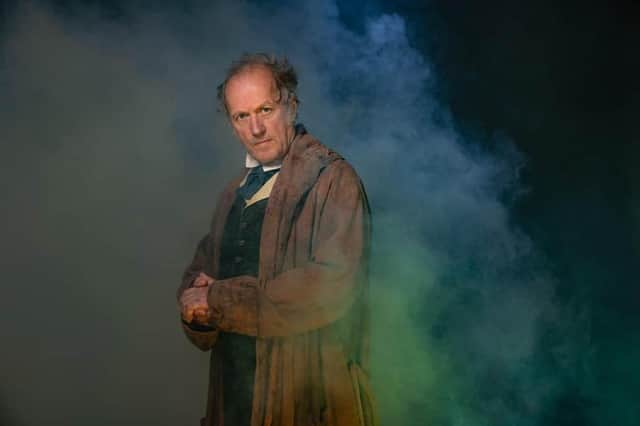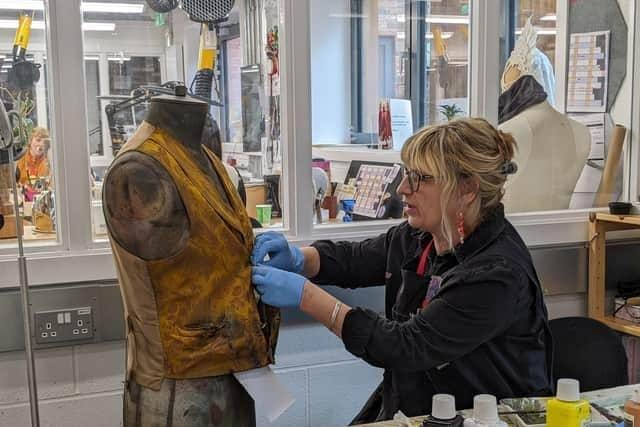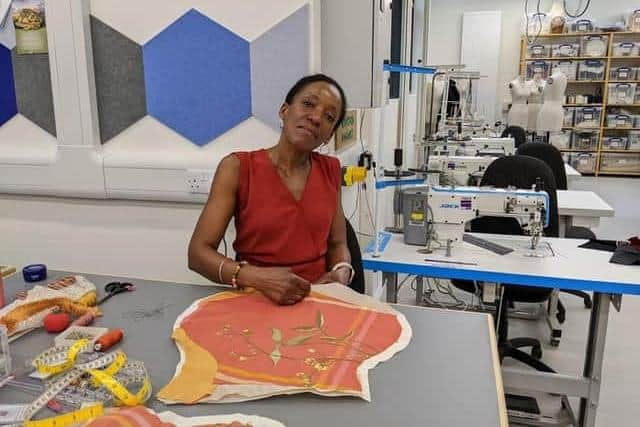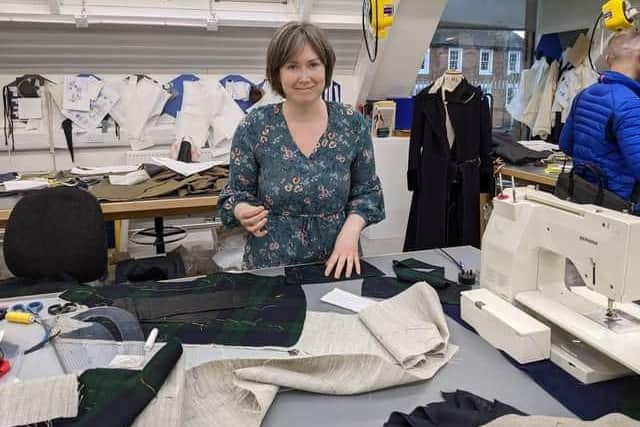Christmas is here - We go behind the scenes of A Christmas Carol with Ade Edmondson as Scrooge at Warwickshire's Royal Shakespeare Company


The RSC’s first production of A Christmas Carol was in 2017, repeated in 2018. It is revived this year in a show featuring prolific comedian and actor Ade Edmondson as Scrooge and a cast including popular TV actress Sunetra Sarker as the Ghost of Christmas Present - along with many other well-known actors.
An inclusive production, A Christmas Carol features four child actors – all with additional needs - sharing the role of Tiny Tim and others (many from Warwickshire schools) as members of the Fezziwig and Cratchit families.
Advertisement
Hide AdAdvertisement
Hide AdCharles Dickens originally devised A Christmas Carol as a political manifesto, exposing and condemning the abject misery of the Victorian poor. It has become one of the most loved and enduring short stories ever written – a festive tale for all ages.In a single night, with the help of a sequence of Christmas ghosts, cold-hearted businessman Ebeneezer Scrooge learns to pity himself and love his neighbour in a classic tale of redemption and compassion.
The RSC production is a large one with 25 actors, many in different roles in different scenes. Each character has his/her own costumes to cover the 11-week run; many need several costumes and for those sharing roles, each costume is fitted to their needs.
It is a huge task for the cutters, dyers and milliners who work in a large building opposite the Stratford-on-Avon theatre.
Often costumes are recycled from previous productions, altered to fit and finished to the designer’s specification. But many are made new using the best materials. The specialist skills in these departments are phenomenal; few theatres can boast the same talent.
Advertisement
Hide AdAdvertisement
Hide AdAnnie Woolstencroft, in the men’s costumes studio said: "The cutters work with the designers; we work from a picture, a design brief, the measurements and the fabric. I make a trial in calico on the stand and then cut it out in the main fabric - flat - and draft the pattern on paper. At the RSC we have really good designers and really good fabric.”


Charlotte Tofield, of Tadmarton near Banbury, said because child actors are subject to working restrictions, they need more costumes than adults.
“We usually have three teams of children working in rotation so you haven't got the same child on stage every night. That means we have to have three sets of everything. Sometimes there are nine sets of costumes and some can't share.
"It is a large amount of work which is why sometimes it's spread through all the departments - Women’s make a lot in-house but also there is a team of outside makers that the RSC use to help.”
Advertisement
Hide AdAdvertisement
Hide AdCutters and costumiers are often given historical picture references for design accuracy. Stratford’s experts use rare skills such as braid-making to create ornate period decoration for costumes which may not be available otherwise.


Helen Davenport has made and fitted a new Regency-style coat for Scrooge’s sister in a scene from Christmas past. In a ‘quick change’ the actress – covering more than one role - will put the coat on over a dress from a different character.
"We go and watch parts of the technical rehearsal. It's nice to see the things in the staging and we get ‘notes’ on the costumes during these rehearsals. It might be something as simple as a hem needing to be taken up, or the actor has less time than was thought for a change, so we might have to make alterations,” said Ms Davenport.
Early in production, rehearsals took place in London where costume fittings took place. With final rehearsals in Stratford, a monitor in the costume department allows costumiers to see the technical rehearsals and they may be called to the theatre to attend to something specific.
Advertisement
Hide AdAdvertisement
Hide Ad"In the technical rehearsals, we'll do repairs or alterations but once the production is on, ‘running wardrobe’ does necessary repairs unless it's major,” said costumier Emily Keeper.


Laura Pogose, a footwear technician, has made templates of the shoes of the Ghost of Jacob Marley from the 2018 production to make ‘ghostly’ leather covers for a new pair of comfortable jazz shoes for the actor in this production.
Alex Thompson and her team of milliners have spent days making and repairing bonnets, under-bonnets and hats for the production. Costumes are made to last and are used repeatedly, in the RST or hired out for films and other productions.
Helen Hughes, head of costume, painting and dyeing, said costumes can be made to look filthy but they are kept very clean: "We heat them after we've painted them and that fixes them so they can be laundered or dry cleaned. We have an ozone cabinet which destroys all the bacteria.
Advertisement
Hide AdAdvertisement
Hide Ad“Anything worn close to the body is laundered after every performance. Most things will go in the ozone cabinet because it's better for the environment.”
The studios have a friendly, community atmosphere where colleagues bounce ideas off each other to come up with the best costumes possible.
The RSC costumes and props departments follow a ‘Green Book’ - an industry wide protocol where theatres attempt to be as green as they can be in all aspects of their theatre-making including sourcing as many materials as possible from this country.
A Christmas Carol opens next Wednesday, October 26.
Additional material by James Snee